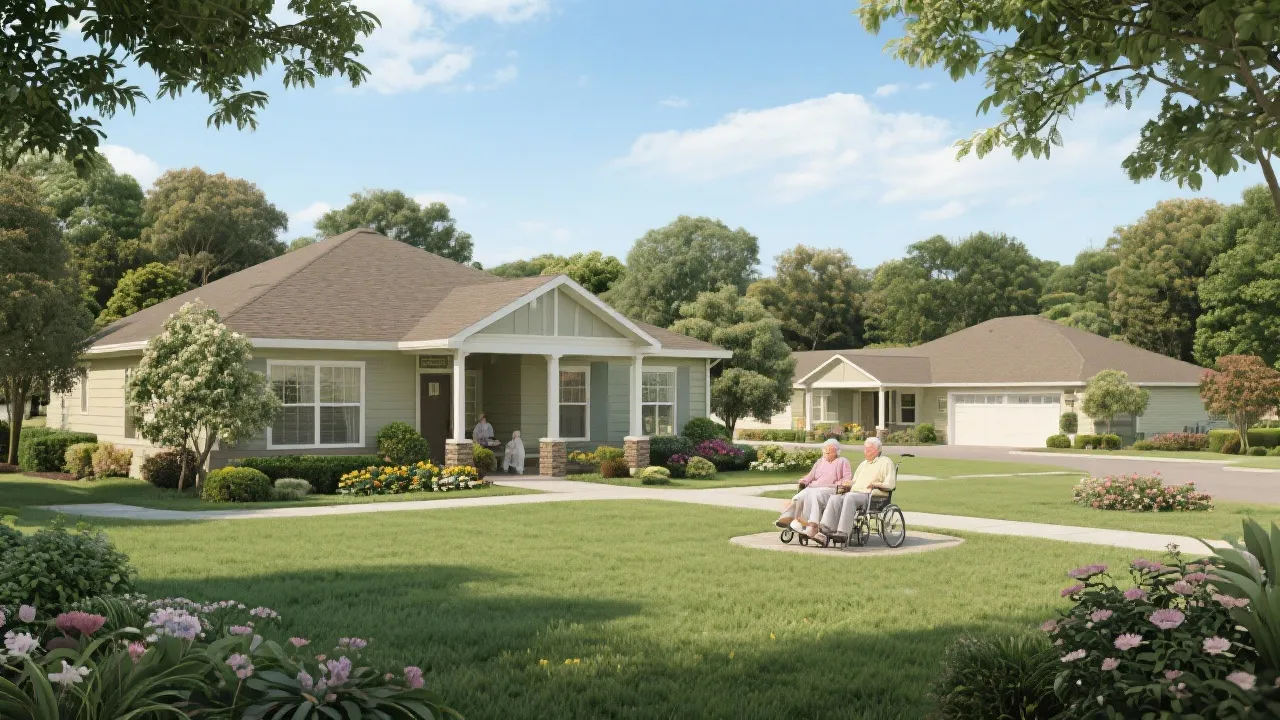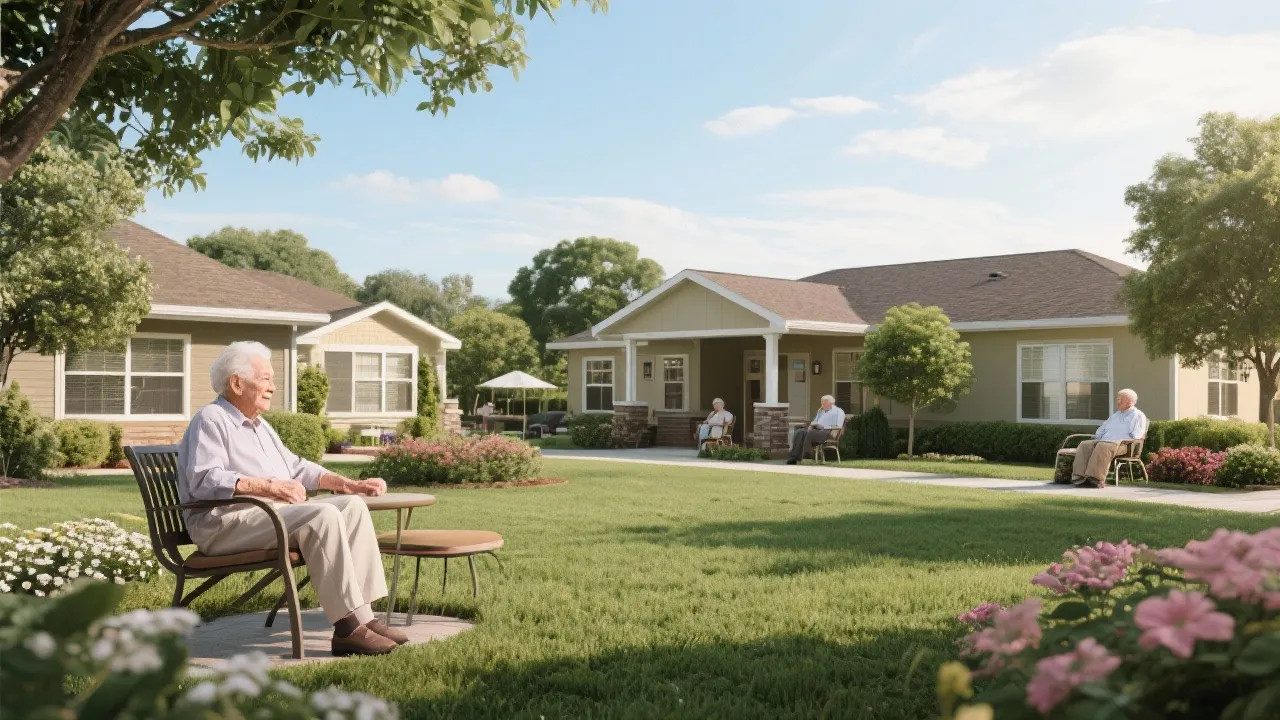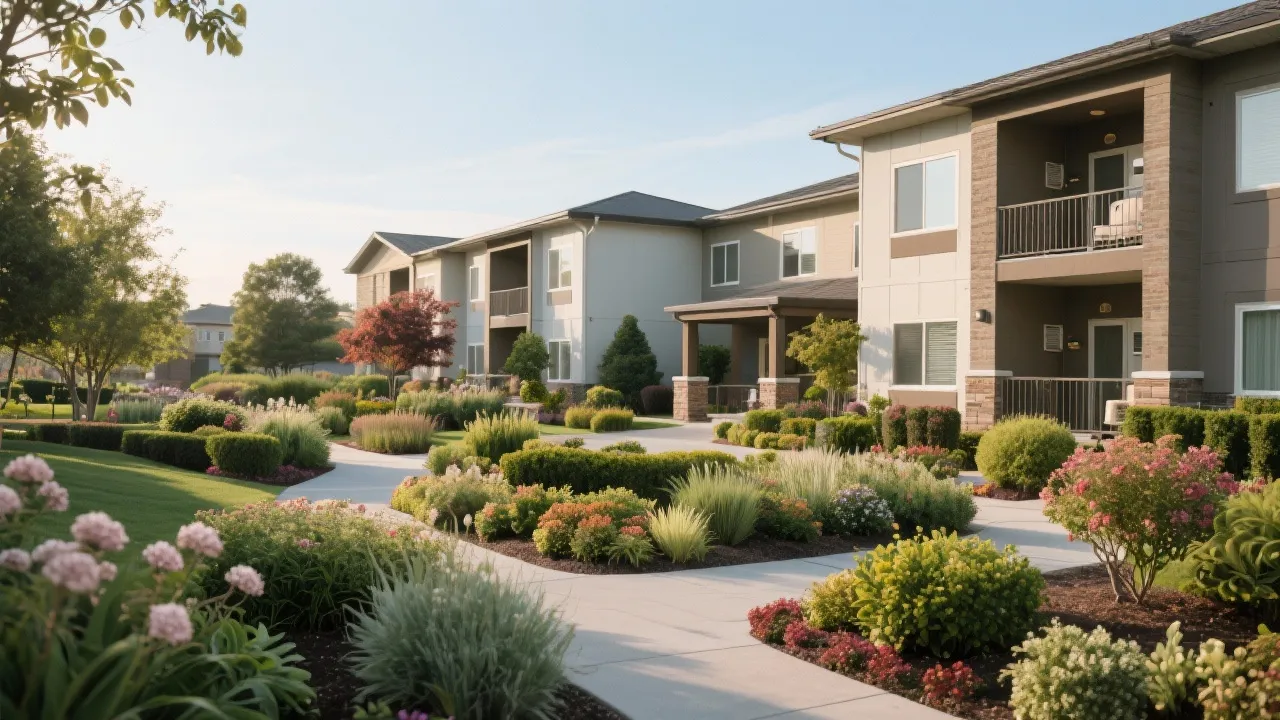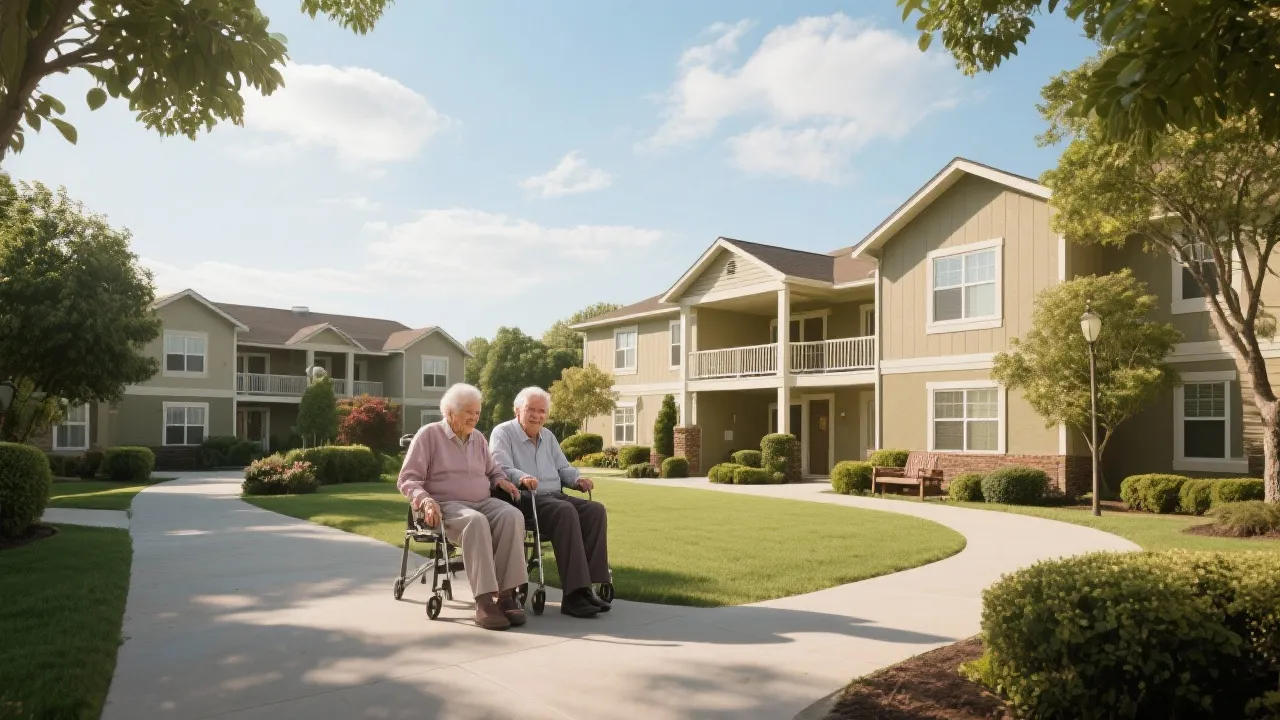Understanding Income Based Senior Living
This article explores the concept of "Income Based Senior Living Near Me," offering insights into affordable senior housing options in English-speaking countries. Discover resources from established organizations such as AARP and SeniorLiving.org, providing support and guidance for retirees seeking appropriate senior living solutions. The guide draws on current data to inform readers about cost-effective living arrangements tailored to various income levels.

Introduction to Senior Living Options
The search for "Income Based Senior Living Near Me" often begins with the need to find suitable, affordable housing options for those entering their golden years. As people age, their housing needs may evolve due to physical mobility challenges or health conditions. Many seniors seek living arrangements that balance financial considerations with the right level of care and comfort. This guide provides a thorough exploration of senior housing solutions across English-speaking countries, focusing on subsidized living environments designed to accommodate varying income levels.
With the increasing population of seniors, especially those aged 65 and older, understanding the landscape of senior living options is essential. From independent living communities to assisted living facilities and nursing homes, the range is vast, and each offers unique benefits tailored to different levels of care and independence. It can often feel overwhelming for seniors and their families to navigate this complex landscape, especially when financial constraints are a concern. Therefore, becoming informed about available resources and housing options can empower seniors to make the best choices for their lives.
Resources for Affordable Senior Living
Several organizations offer valuable information to help seniors and their families navigate the choices in senior living. In the U.S., the American Association of Retired Persons (AARP) is a primary resource, providing details about independent living, assisted living, and other care options for individuals over 55. Their comprehensive guides facilitate informed decisions regarding senior housing by offering information on cost estimates, amenities, and testimonials from those who have gone through the process.
SeniorLiving.org is another key resource, offering an extensive directory of senior living communities. This platform details pricing, amenities, and care types available, ensuring seniors can find a suitable and affordable solution tailored to their needs. Furthermore, they provide helpful articles and advice on transitioning into senior living and the various aspects that families should consider when evaluating different options.
The National Senior Citizens Law Center (NSCLC) focuses on protecting seniors’ rights while providing essential information about housing and care options. Their advocacy work extends to aiding seniors in securing affordable living arrangements. For seniors with limited income or specific needs, the NSCLC often collaborates with local organizations to help navigate the application process for housing assistance programs.
Additional resources exist in the form of local government initiatives and community outreach programs aimed at aiding low-income seniors. Many states have agencies dedicated to aging services, providing information on local programs that support affordable housing, financial assistance, and other beneficial services. Connecting with these local agencies can significantly enhance a senior’s ability to find suitable accommodation while navigating the complexities of senior living.
| Country | City Type | Price Range |
|---|---|---|
| United States | Large cities | $2,000 - $4,000 per month |
| Smaller cities | $1,000 - $2,000 per month | |
| United Kingdom | Large cities | £1,500 - £3,000 per month |
| Smaller cities | £800 - £1,500 per month | |
| Australia | Large cities | AUD 2,000 - AUD 3,500 per month |
| Smaller cities | AUD 1,200 - AUD 2,000 per month |
The price ranges outlined in the table draw attention to the geographical disparities in housing costs, highlighting that seniors living in larger metropolitan areas often face higher costs compared to their counterparts in smaller towns or cities. This variation can impact the available services and the types of senior living facilities accessible to seniors based on their financial circumstances. Additionally, many facilities offer sliding scale fees or income-based housing options to assist those with lower incomes, so reviewing several options before making a decision is essential.
Steps to Find Income-Based Senior Living
Finding cost-effective senior living involves several steps. First, explore directories like SeniorLiving.org for an overview of options in your area, providing a starting point for your search. Create a shortlist of potential living arrangements that fit your financial constraints and care requirements. Then, utilize resources provided by organizations like AARP to understand the various types of senior living and associated costs. They offer specific insights about what to expect from each type of senior community, which can help narrow your selection.
Contact local housing authorities or social services for assistance in identifying income-based housing programs tailored to seniors. Many cities have waiting lists for income-based housing, and it’s advisable to apply as early as possible. When you visit any potential communities, ask detailed questions about any additional fees, such as utilities, meal plans, or community activities, which might not be initially evident. Understanding the total financial commitment associated with living in a facility is crucial to maintaining your budget.
Another recommended step is to talk to current residents and their families about their experiences. This firsthand insight can provide valuable information about the quality of service, social opportunities, and overall satisfaction with the community. Additionally, many communities offer introductory tours or trial stays that could provide invaluable experiences before making a long-term commitment.
Finally, consider consulting with a geriatric care manager who can assist you through the process of finding an appropriate facility that aligns with both your care needs and your financial situation. These professionals specialize in the unique challenges of aging and can help streamline the search process, making it less daunting.
Types of Senior Living Options
Understanding the different types of senior living options available is crucial. The primary categories include independent living, assisted living, memory care, and nursing homes, and each serves a different purpose depending on the level of care required.
Independent Living
Independent living is designed for seniors who are largely self-sufficient but may desire social interaction and some amenities that promote an active lifestyle. These communities often feature apartments or cottages and provide shared facilities such as dining areas, recreational activities, and transportation services. One of the main benefits of independent living is the opportunity to engage with peers and participate in various programs without the burden of upkeep and maintenance that comes with home ownership.
Assisted Living
Assisted living facilities cater to seniors who require assistance with daily activities but still value their independence. These communities provide personal care services such as help with bathing, medication management, and meal preparation. Many facilities employ licensed staff available 24/7 and offer various social activities, communal meals, and wellness programs designed for older adults. Assisted living can be a beneficial choice for seniors who need a bit more support than independent living without requiring full-time nursing care.
Memory Care
Dedicated memory care facilities serve seniors struggling with memory-related conditions, such as Alzheimer’s disease or other dementias. These specially designed communities provide a secure environment with trained staff who understand the unique needs of individuals with cognitive impairments. Memory care facilities often incorporate structured routines, activities that stimulate cognition, and safety protocols to minimize risks associated with wandering or disorientation. Families considering memory care should look for facilities with positive reputations and engaged staff committed to enhancing residents' quality of life.
Nursing Homes
Nursing homes provide the highest level of care for seniors with significant health concerns that require round-the-clock medical attention. These facilities are equipped with licensed nurses and can manage complex health issues, rehabilitation needs, and chronic illnesses. While nursing homes come at a higher cost and are focused more on medical care than social engagement, they are an essential option for families needing comprehensive care solutions for their loved ones.
Frequently Asked Questions (FAQs)
- What is income-based senior living? Income-based senior living refers to housing options where rent is determined based on the resident's income, making it more affordable for lower-income individuals. This option can significantly alleviate the financial burden on seniors, allowing them to allocate funds to other essentials, such as healthcare or personal care necessities.
- How can I qualify for income-based senior living? Eligibility typically depends on factors such as age, income level, and residency. Many programs prioritize individuals aged 62 and older, but some may have different qualifying criteria. Contact local housing authorities or organizations to gather specific qualification requirements for your area.
- Are there any additional costs involved? Besides rent, additional costs can include utilities, meal plans, and maintenance fees. Be sure to inquire about these when researching options, as they can vary widely among communities. Understanding all the costs associated with a senior living community is vital to avoiding surprises that can impact your budget down the line.
- What should I consider when touring a facility? When touring a facility, take note of the cleanliness and accessibility of the space. Ask about staff-to-resident ratios, available care services, daily activities, and any recent updates or renovations. Engaging with current residents to understand their experiences can provide valuable insights. Don't hesitate to ask specific questions about care plans and how they are tailored to suit residents' individual needs.
- Is it possible to transition from one level of care to another? Yes, many communities offer a continuum of care, allowing residents to move between different levels of care as their needs change. If you anticipate requiring additional support in the future, inquire about the policies regarding transitioning between different services within the community.
Conclusion
As the population ages, the demand for affordable senior living options grows. Navigating the available choices requires patience and thorough research, but utilizing resources from reliable organizations, understanding cost structures, and knowing where to seek assistance are vital steps in securing comfortable and suitable housing for income-based needs. By taking the time to explore and consider various options, seniors can find housing that not only aligns with their financial requirements but also caters to their well-being and lifestyle preferences.
Families play a significant role in supporting seniors during this transition, providing emotional and logistical assistance to ensure that their loved ones can make informed choices that foster independence and quality of life. Ultimately, the goal is to create an environment where seniors can thrive, feel connected, and continue living fulfilling lives in a community that respects their dignity and personal choices.
Disclaimer: The above information comes from online resources, and the data is as of October 2023. For more information, please refer to the official websites linked in the source section.










